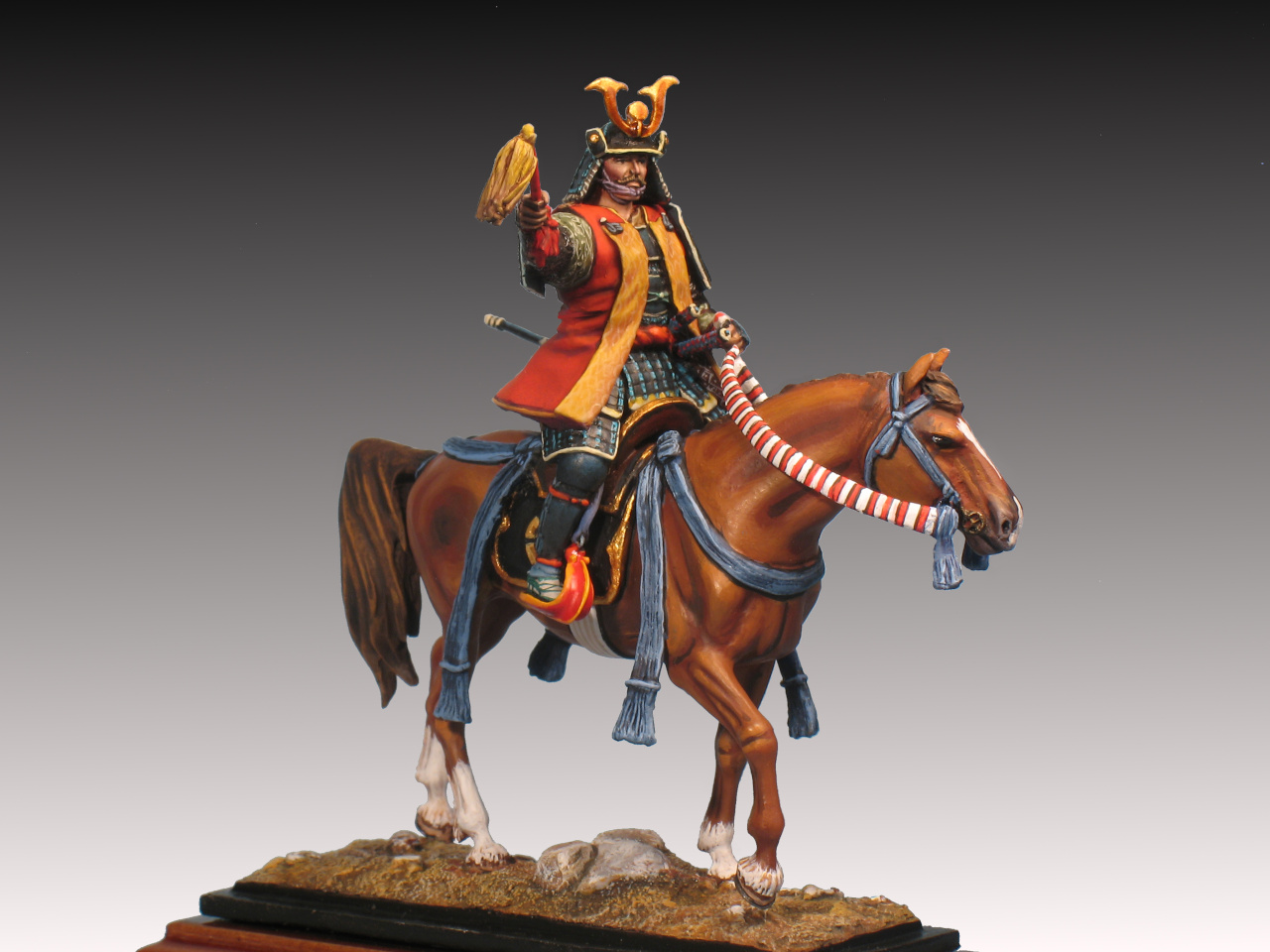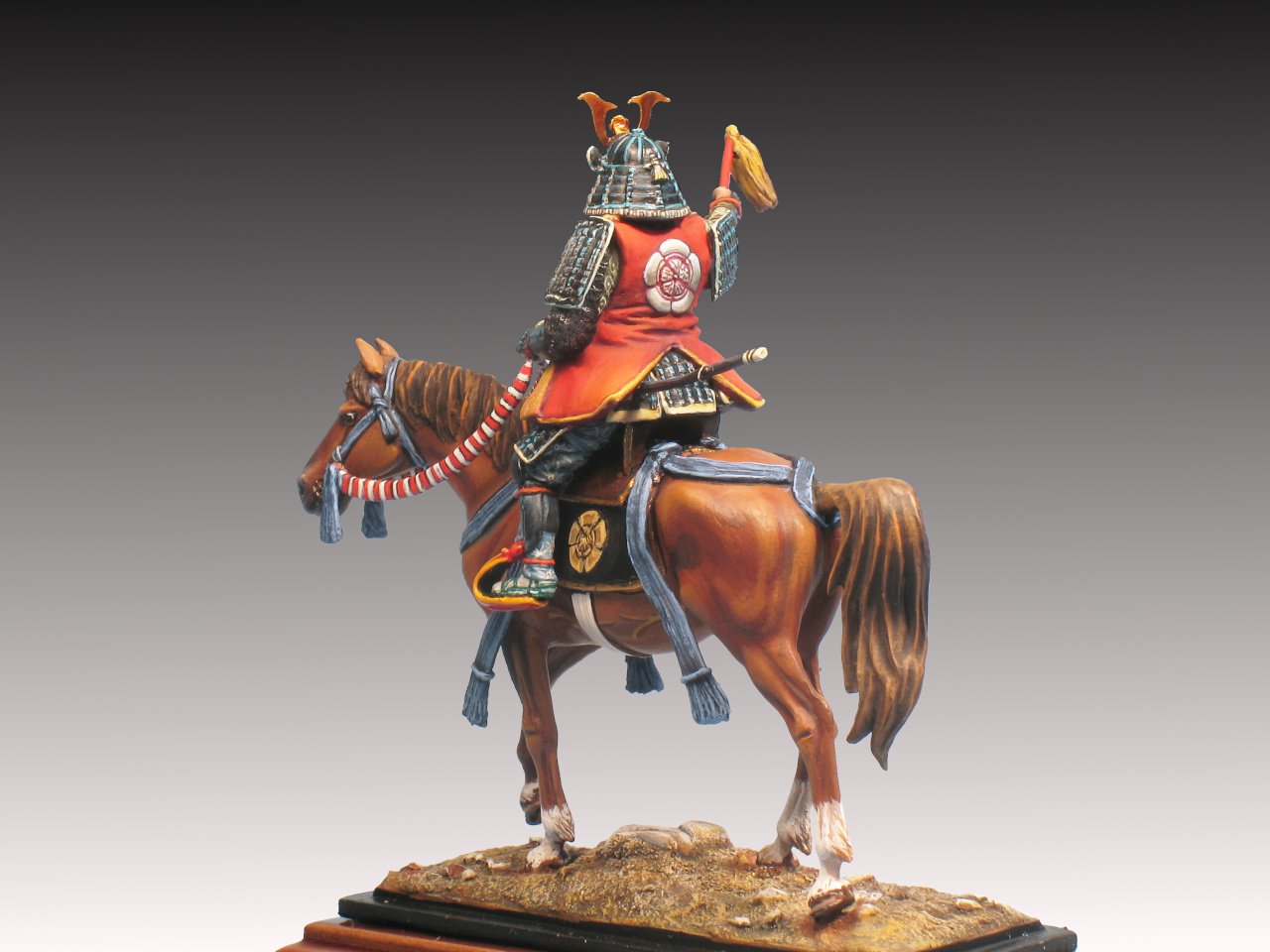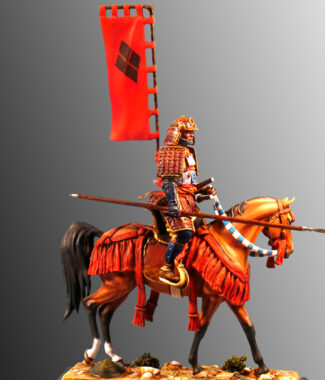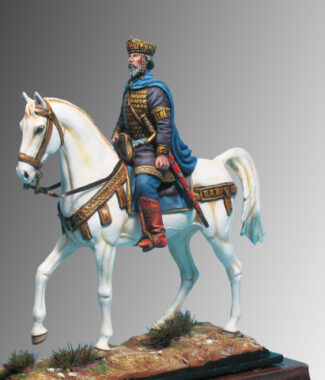You must be logged in to post a review.
Oda Nobunaga – 1582
€68.00
Figure to assemble and paint
Ref.: 07 – PCA
Weight: 250 grs.
Material: White Metal
Number of Pieces: 20
Historical Review:
ODA NOBUNAGA – 1582.
Oda Nobunaga (1534 – 1582) was a prominent daimyō (feudal lord) who lived between the Sengoku and the Azuchi-Momoyama periods of Japanese history. Being the son of a minor daimyō in Owari province, he fought against other members of his family for the control of the clan upon his father’s death and killed one of his brothers in the process. In 1560 he also fought and defeated Imagawa Yoshimoto at the Battle of Okehazama, where he resulted victorious thanks to a surprise attack. This led Nobunaga to become the most powerful military ruler in the country.
In 1568 he helped Ashikaga Yoshiaki to be appointed shōgun by the emperor––a title meaning ‘commander of the army’––, thus entering the capital, Kyoto, with his army and taking control of the city. Later, Yoshiaki wanted to appoint Nobunaga kanrei ––that is, assistant of the shōgun––, but he refused, and Nobunaga issued instead a series of regulations limiting the shōgun’s activity to practically ceremonial matters. Yoshiaki then contacted several daimyōs and warrior monks to form a coalition against Nobunaga, who confronted them between 1570 and 1573, when the rivalry between the shōgun and Nobunaga became open and public. Nobunaga confronted Yoshiaki and easily defeated him, bringing the Ashikaga shogunate to an end.
In 1575 he engaged the Takeda clan in the famous battle of Nagashino, where his arquebusiers defeated the clan’s legendary cavalry by firing in rotation rather than simultaneously as had previously been the practice. Between 1573 and 1578 he remained close to the imperial court and received various titles, eventually being appointed udaijin ––that is, Minister of the Right––, the third highest position in the government hierarchy. During these years Nobunaga was the central figure in the government, although in 1578 he relinquished all his titles on the grounds of military duties.
By 1582 Nobunaga dominated the entire central part of Japan, as well as its two main roads, the Tōkaidō and the Nakasendō, and strived to extend his rule westward. While his generals were sent to different regions to continue their military conquests, Nobunaga went to rest at Honnō Temple. One of his most important generals, Akechi Mitsuhide, who intended to betray him, turned back on his route and laid siege to the temple, in what is known as the “Honnō-ji Incident”. Nobunaga died at that battle by committing seppuku -that is, harakiri, a ritualistic form of suicide––, although his remains could not be retrieved because the temple collapsed from fire.
Nobunaga’s military conquests began a process of unification of the country, which had been plagued by land and power struggles between the various local landowners. This process of pacification was continued by Toyotomi Hideyoshi, another of Nobunaga’s leading generals, who took over Nobunaga’s authority after his death after defeating Mitsuhide. The unification of the country finally came to an end when Tokugawa Ieyasu, Nobunaga’s ally, established the Tokugawa shogunate in 1603. Nobunaga is thus regarded as the first of the “three great unifiers of Japan”. In addition, some events in his life were decisive in the history of the country: his march into Kyoto in 1568 marks the end of the Sengoku period and thus the beginning of the Azuchi-Momoyama period, which takes its name partly from the castle he had built, Azuchi Castle. The expulsion of the last Ashikaga shōgun marked the end of the second shogunate in Japanese history-–the Ashikaga shogunate-–and also marked the beginning of the era known as Tenshō.
Nobunaga not only went down in history for being the first unifier of Japan and one of the best strategists of the time as well as a master in the use of troops armed with guns, but also for his administrative reforms, by which he laid the foundations of a solid state. Nobunaga initiated a new administrative reform of the rural areas, carrying out an extensive cadastre and creating a new tax system, eliminating the country’s internal customs to favour internal trade and unifying weights and measures throughout the country. At the same time, in order to promote security and exercise greater control over the population, he prohibited religious organisations and peasants from owning swords, carrying out raids to seize weapons in villages and monasteries in what was known as the “sword hunt”, which began in 1576 and was carried out by his successors after his death.
In short, Oda Nobunaga, far from being a “demon”, as he has sometimes been called, is the creator of modern Japan, laying the foundations for a unified and consolidated country, putting an end both to the eternal feudal struggles and to the political interference of religious sects. As fortune would have it, he was never able to enjoy the unification he pursued.
The figure wears the field uniform, with a khaki jacket, while at this date, blue trousers with yellow stripes were still worn for the troops and gold for the officers. The bugle cord was red, yellow and blue. The salacots were covered with a khaki cover. The bugle emblem can be seen on the upper right arm of the figure.








Reviews
There are no reviews yet.